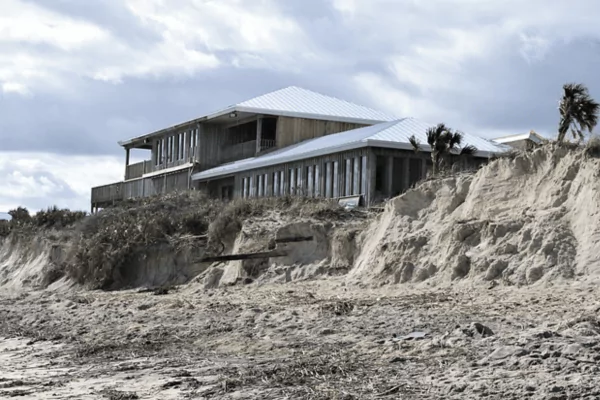Property damage can devastate businesses, leading to financial losses, operational disruptions, and reputational damage. Whether it’s due to natural disasters, accidents, or intentional acts, companies must proactively assess and mitigate the risks associated with property damage. This article explores the potential risks businesses face, discusses preventive measures, and outlines how companies can respond effectively in the event of property damage.
Identifying Potential Risks
Before implementing preventive measures, it’s essential to identify the potential risks that could lead to property damage. Some familiar sources of property damage for businesses include:
- Theft and Vandalism: Businesses may be targeted by thieves or vandals, resulting in property damage, stolen assets, and loss of valuable data. In this case, consider if your business needs bullet proof doors to enhance security and protect against break-ins. Implementing security measures, such as surveillance cameras, access control systems, and alarm systems, can also deter criminals.
- Natural Disasters: Businesses in areas prone to natural disasters, such as floods, earthquakes, hurricanes, or wildfires, are at a higher risk of property damage. Understanding the specific risks associated with the business’s geographical location is crucial for preparedness.
- Fire Hazards: Fire can quickly engulf a business premise, causing extensive property damage. Faulty wiring, overheated equipment, or human error can lead to fire incidents. Businesses should have robust fire prevention and response plans in place.
- Water Damage: Water leaks, burst pipes, or flooding can wreak havoc on a business. Proper maintenance of plumbing systems, regular inspections, and appropriate measures to prevent water damage are essential.
- Accidents: Accidental incidents, such as vehicle collisions, equipment failures, or chemical spills, can cause property damage. Proper safety protocols, regular maintenance, and employee training are crucial for accident prevention.
Preventive Measures
Once potential risks have been identified, businesses can take several preventive measures to minimize the likelihood and impact of property damage:
- Risk Assessment: Conduct a thorough risk assessment to identify vulnerabilities and prioritize mitigation efforts. This includes assessing the building’s structural integrity, identifying potential hazards, and evaluating emergency response plans.
- Insurance Coverage: Obtain comprehensive property insurance coverage tailored to the business’s specific needs. Property insurance can help mitigate financial losses associated with property damage. This includes repairs, replacements, and business interruption costs.
- Maintenance and Inspections: Regular maintenance and inspections of the building, equipment, and infrastructure are crucial. Identify and address potential issues before they escalate into significant problems. Implement preventive maintenance programs and keep records of inspections and repairs.
- Security Measures: Install security systems, including alarms, surveillance cameras, access control systems, and lighting. Physical barriers like fences or bollards can deter unauthorized access and protect the property.
- Fire Prevention: Implement fire prevention measures, including installing smoke detectors, fire extinguishers, and fire suppression systems. Develop and communicate fire evacuation plans to employees, conduct regular drills, and ensure proper training in fire safety.
- Data Backup and Protection: Protecting digital assets is equally important. Implement robust data backup procedures and store backups offsite or in the cloud. Employ cybersecurity measures to prevent data breaches, such as firewalls, encryption, and regular security audits.
Responding to Property Damage
Despite taking preventive measures, property damage incidents can still occur. In such situations, businesses must respond promptly and effectively to mitigate further losses and resume operations:
- Ensure Safety: The safety of employees, customers, and visitors should be the top priority. Evacuate the premises if necessary and assist as required. Contact emergency services, such as fire departments or law enforcement, if the situation warrants it.
- Document the Damage: Take photographs or videos of the property damage as soon as it is safe. Documenting the extent of the damage is crucial for insurance claims and can help in the assessment and recovery process. Make sure to capture detailed images from different angles and take notes of any visible damages or losses.
- Contact Insurance Provider: Notify your insurance provider immediately and provide them with all the necessary information regarding the property damage. Familiarize yourself with the coverage details of your insurance policy to understand what is included and what documentation is required for the claim process. Work closely with your insurance adjuster to ensure a smooth and efficient claim settlement.
- Secure the Property: Secure the damaged property to prevent further losses or potential theft. This may include boarding up broken windows, locking doors, or installing temporary fencing if necessary. Cooperate with law enforcement if the incident involves criminal activity.
- Assess the Operational Impact: Evaluate the impact of the property damage on your business operations. Identify critical functions or equipment that have been affected and determine the immediate and long-term consequences. This assessment will help prioritize recovery efforts and develop a plan to minimize disruption to your business.
- Engage Professional Services: Depending on the extent of the damage, you may need to engage professional services to assist with the restoration and recovery process. This may include hiring contractors, restoration specialists, or other relevant experts who can assess the damage, provide repair estimates, and oversee the restoration work.
- Communicate with Stakeholders: Keep your employees, customers, suppliers, and other stakeholders informed about the situation and any necessary changes to your business operations. Provide regular updates on the progress of the recovery efforts and address any concerns or questions they may have. Maintaining open and transparent communication helps build trust and support during challenging times.
- Implement a Business Continuity Plan: If the property damage significantly impacts your ability to operate from the affected location, activate your business continuity plan. This may involve temporarily relocating to an alternate site, establishing remote work arrangements, or outsourcing certain functions until the property is restored.
- Review and Enhance Preventive Measures: Once the immediate response and recovery efforts are underway, conducting a thorough review of the incident and identifying areas for improvement in your preventive measures is essential. Assess what worked well and what can be enhanced to prevent or mitigate similar incidents in the future. This may involve updating safety protocols, strengthening security measures, or revising insurance coverage to align with the current needs of your business.

Property damage incidents can have significant consequences for businesses, but being prepared and proactive can help minimize risks and mitigate potential losses. Companies can effectively manage property damage incidents by identifying potential hazards, implementing preventive measures, and having a well-defined response plan. Remember to prioritize the safety of individuals, document the damage, contact your insurance provider, secure the property, assess operational impacts, engage professional services, communicate with stakeholders, implement business continuity plans, and review and enhance preventive measures. Businesses can navigate property damage incidents with resilience and ensure a swift recovery by taking these steps.
Read These Article Also:
1.How to Choose the Right Commercial Snow Removal Company for Your Property







